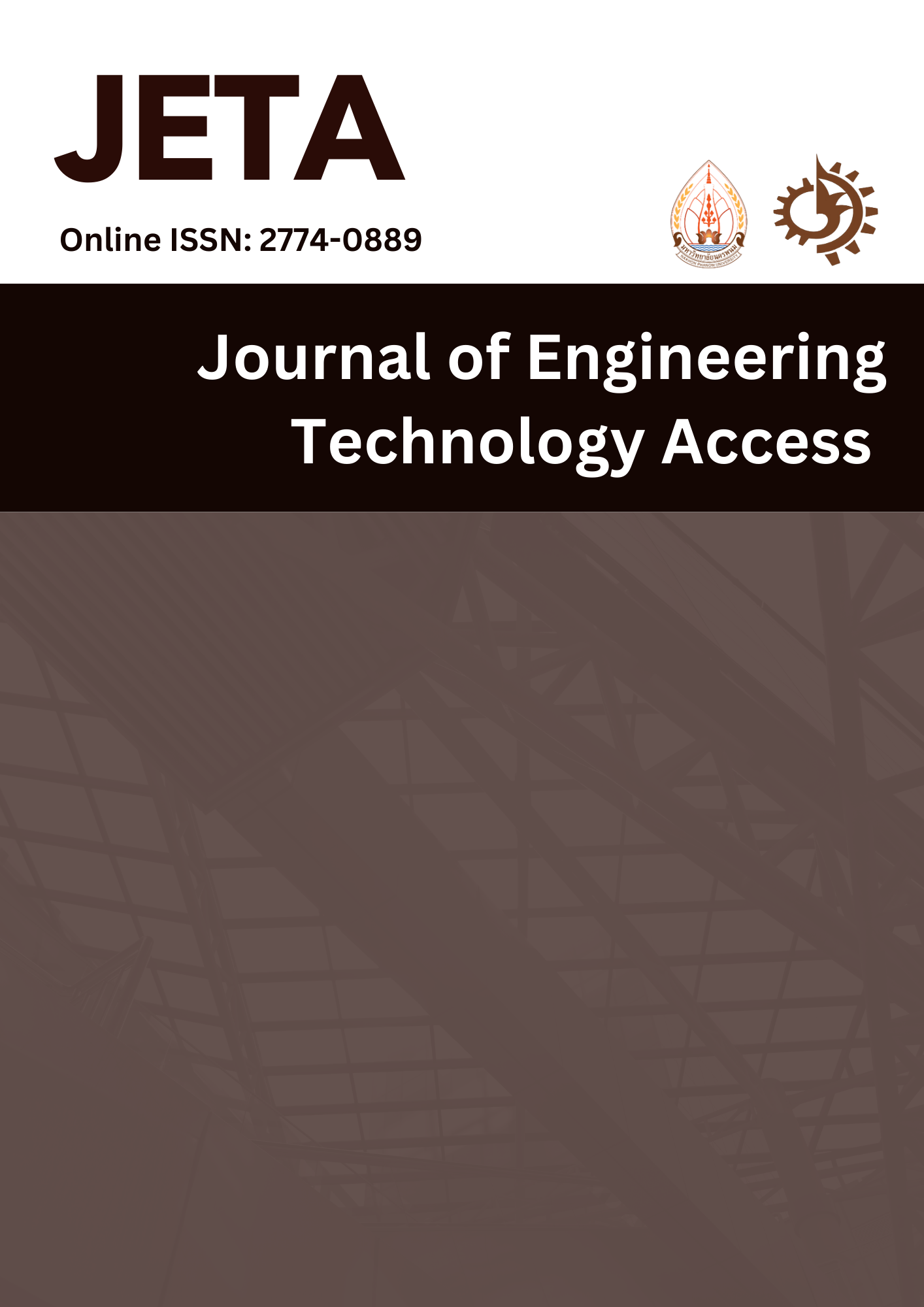อิทธิพลของวงรอบเปียกและแห้งต่อกำลังรับแรงอัดและโมดูลัสดินซีเมนต์ลูกรังผสมโพลิเมอร์
Main Article Content
บทคัดย่อ
โครงสร้างชั้นพื้นทางถือเป็นหนึ่งในโครงสร้างหลักที่ส่งผลต่อกำลังและความคงทนของถนน งานวิจัยนี้ศึกษาสมรรถนะของลูกรังผสมดินซีเมนต์และปรับปรุงคุณภาพด้วยน้ำยาโพลิเมอร์ในระยะยาวเพื่อใช้เป็นวัสดุชั้นพื้นทาง โดยศึกษาอิทธิพลของวงรอบเปียกและแห้ง (Wet and dry cycle) ต่อค่ากำลังอัดแบบไม่จำกัดและปริมาณการสูญเสียมวลของดิน จากการศึกษาพบว่าน้ำยาโพลิเมอร์ช่วยลดการสูญเสียของดินที่ผ่านการทดสอบวงรอบแห้งและเปียก ช่วยลดการสูญเสียกำลังรับแรงอัดและเพิ่มค่าโมดูลัสของดินซีเมนต์ตัวอย่าง โดยน้ำยาโพลิเมอร์จะช่วยเพิ่มแรงยึดเหนียวระหว่างเม็ดดิน ช่วยปรับกำลังและความคงทนของดินลูกรังซีเมนต์ชั้นพื้นทาง ส่งผลให้อายุของถนนที่ผสมน้ำยาโพลิเมอร์มีแนวโน้มเพิ่มขึ้น
Article Details

อนุญาตภายใต้เงื่อนไข Creative Commons Attribution-NonCommercial-NoDerivatives 4.0 International License.
เอกสารอ้างอิง
Sawaliwong, K. & Jitsangiam, P. & Nusit, K. (2020). Improvement of sub-standard lateritic soil with cement-polymer mixtures. The 25th National convention on civil engineering.
Ngenprom, N. (2010). Study on Properties of Laterite Soil Portland Cement and Slag Mix as a Pavement Materials. RMUTP Research Journal, 4(1), 25-31.
Horpibulsuk, S. (2005). Factors influencing strength development of cement stabilized soils for road construction. Civil Engineering Department, School of Engineering, Suranaree University of Technology.
ASTM (2015). Standard test methods for wetting and drying compacted soil-cement mixtures. ASTM D559 / D559M-15, American Society for Testing and Materials, West Conshohocken, PA, USA, 2015.
Pinwiset, K. (2017). The development of para soil cement road. Engineering Department of Civil Engineering Faculty of Engineering Thammasat University.
Kumpala, A. & Chinklang, S. & Banjongkit, P. & Jitchaiyaphum, K. (2016). Influence of wet-dry cycled on compressive strength of soil cement; case height cement content. 21th National Convention on Civil Engineering 28-30 June.
Suebsuk. J. & Siriphan, A. (2017). Effects of wetting and drying cycles on strength of cement stabilized lateritic soil as base course material. Faculty of Engineering Chiang Mai University.
Had Kaew, I. & Nusit, K. & Jitsangiam, P. & Pra-ai, S. & Khumkud, N. & Ponpitakchai, T. (2021). The study of the properties of the cement polymer-stabilized road materials.The 26th National Convention on Civil Engineering 23-25 June.
Khumkud, N. (2022). Laboratory assessment for long-term performance and durability of cement-polymer stabilized road base. M.Eng. Thesis in Civil Engineering, Naresuan University.
Srichat, C. & Hormdee, D. (2022). Effect of wet-dry condition on compressive strength of soil improvement with cement and fly ash-based geopolymer. Engineering Journal of Research and Development, 33(1), 23-34.
Bureau of testing research and development. (2002). Standard No. DH-S 501.1/2545.
Bureau of testing research and development. (1989). Standard No. DH-S 206/2532.
Bureau of testing research and development. (1990). Standard No. DH-S 204/2533.
Horpibulsuk, S., Katkan, W., Sirilerdwattana, W., and Rachan, R. (2006). Strength development in cement stabilized low plasticity and coarse-grained soils laboratory and field study. Soils and Foundations, 46(3): 351-366.
Akram, T. & Memon, S, A. & Obaid, H. (2009). Production of low-cost self-compacting concrete using bagasse ash. Construction and Building Materials, 23(2), 703-712.
Holtz, W.G. & Gibbs, H.J. (1956). Engineering properties of expansive clays. Transaction of the American Society of Civil Engineering, 121, 641-663.
Horpibulsuk, S. & Suddeepong, A. & Chinkulkijniwat, A. & Liu, M.D. (2012). Applied clay Science Strength and compressibility of lightweight cemented clays. Applied clay Science, 69, 11-21.
Pitthaya Jamsawang. (2018). Applications of soil cement in civil engineering works. Civil Engineering Department, Faculty of Engineering, King Mongkut’s University of Technology North Bangkok.






